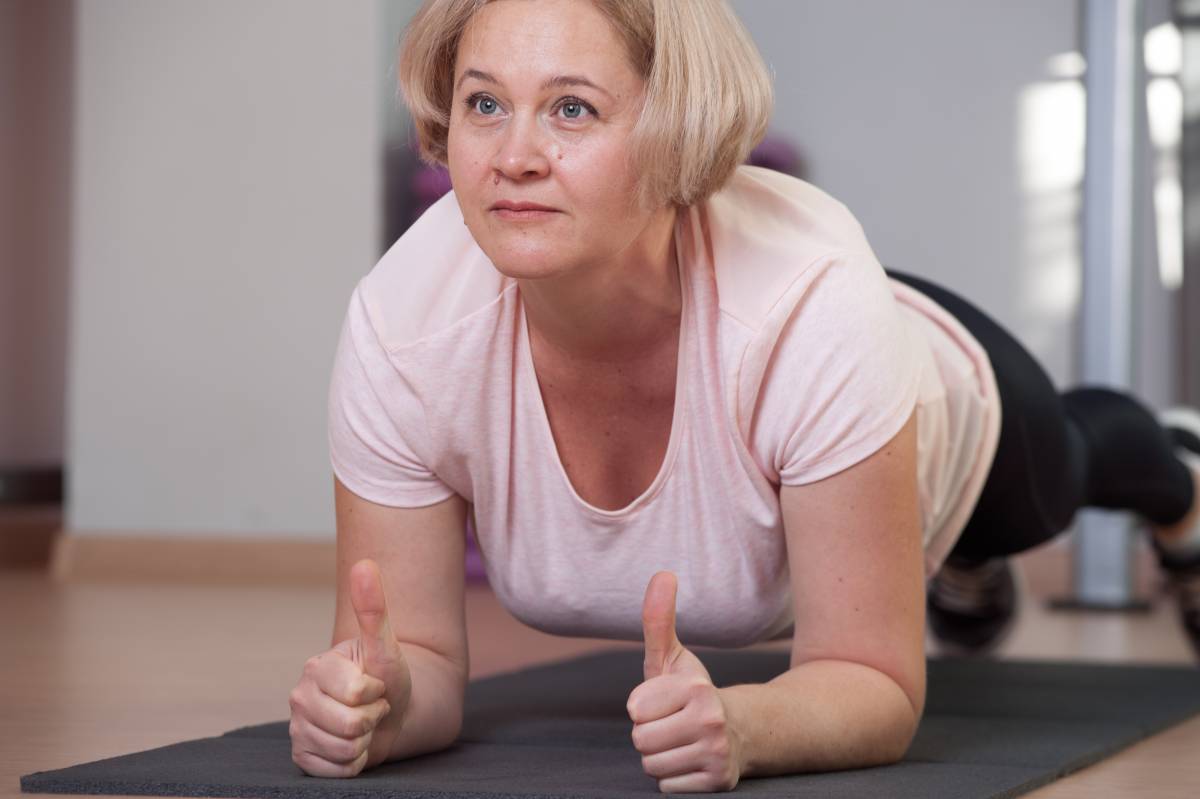Researchers suggest that exercise guidelines for controlling blood pressure may need an update
Static isometric exercises – such as wall sits and planks – are best at lowering people’s blood pressure (BP), according to a pooled data analysis of the available evidence from clinical trials that is published today (26 July) online in the British Journal of Sports Medicine.
First author Jamie Edwards, a PhD instructor and academic sessional at the School of Psychology and Life Sciences at Canterbury Christ Church University, and his colleagues found that ‘cardio’ (aerobic exercise), dynamic resistance training (such as squats, press-ups, and weights), and high intensity interval training (HIIT) are also effective.
The researchers suggest it could be timely to review the current exercise guidelines on preventing and treating high BP and note that research has shown that exercise in general is associated with significant reductions in people's BP. Aerobic or cardio exercise, such as walking, running, and cycling, has mainly been recommended in the past.

But this recommendation is largely based on older data that exclude the newer forms of exercise, such as HIIT and isometric exercise, meaning that the current recommendations are probably outdated, Mr Edwards and his colleagues suggest.
In a bid to examine whether information on the best form of exercise for controlling blood pressure might need updating, they trawled through research databases looking for clinical trials that covered the effects of exercise training interventions lasting two weeks or more on resting BP. The exercise interventions were classified as aerobic (‘cardio’); dynamic resistance training; a combination of these; HIIT; and isometric exercises.
Healthy resting blood pressure was defined as a reading below 130/85 mmHg; pre-high BP as 130–139/85–89 mmHg; and high blood pressure as 140/90 mmHg or more. [Systolic BP measures arterial pressure when the heart beats, while diastolic BP, the second number, measures arterial pressure between beats].
In all, 270 randomised controlled trials published from 1990 to February 2023 were included in the final analysis, with a pooled data sample size of 15,827 participants. The pooled data analysis showed significant reductions in resting systolic and diastolic blood pressure after all the various categories of exercise, but with the largest falls in both systolic and diastolic blood pressure after isometric exercise training.
These findings provide a comprehensive data driven framework to support the development of new exercise guideline recommendations for the prevention and treatment of arterial hypertension [Jamie Edwards et al]
Results
The reductions in blood pressure after aerobic exercise training amounted to 4.49/2.53 mmHg; 4.55/3.04 mm Hg after dynamic resistance training; 6.04/2.54 mmHg after combined training; 4.08/2.50 mmHg after HIIT; and 8.24/4 mmHg after isometric exercise training.
The rank order of effectiveness values for reducing systolic blood pressure were isometric exercise training (98 per cent), combined training (76 per cent), dynamic resistance training (46 per cent), aerobic exercise training (40.5 per cent) and HIIT (39 per cent).
Secondary analyses revealed wall squats (isometric) and running (aerobic) as the most effective individual exercises for reducing systolic blood pressure (90.5 per cent) and diastolic blood pressure (91 per cent), respectively, with isometric exercise, overall, the most effective for reducing both blood pressure elements.
Conclusion
The researchers acknowledge that variations in the types of participants included across the clinical trials and differences in statistical and methodological processes and exercise interventions may have influenced the findings, and so should be interpreted in light of these limitations.
But Mr Edwards and his colleagues conclude: ‘Overall, isometric exercise training is the most effective mode in reducing both systolic and diastolic blood pressure.' They add: ‘These findings provide a comprehensive data driven framework to support the development of new exercise guideline recommendations for the prevention and treatment of arterial hypertension.’
To read the full version of the article –titled Exercise training and resting blood pressure: a largescale pairwise and network meta-analysis of randomised controlled trials doi 10.1136/bjsports-2022-106503 – click
Twitter: @EdwardsJ361 (Jamie J Edwards); @JODriscoll9 (Jamie M O'Driscoll)
Author: Ian A McMillanShare it with














